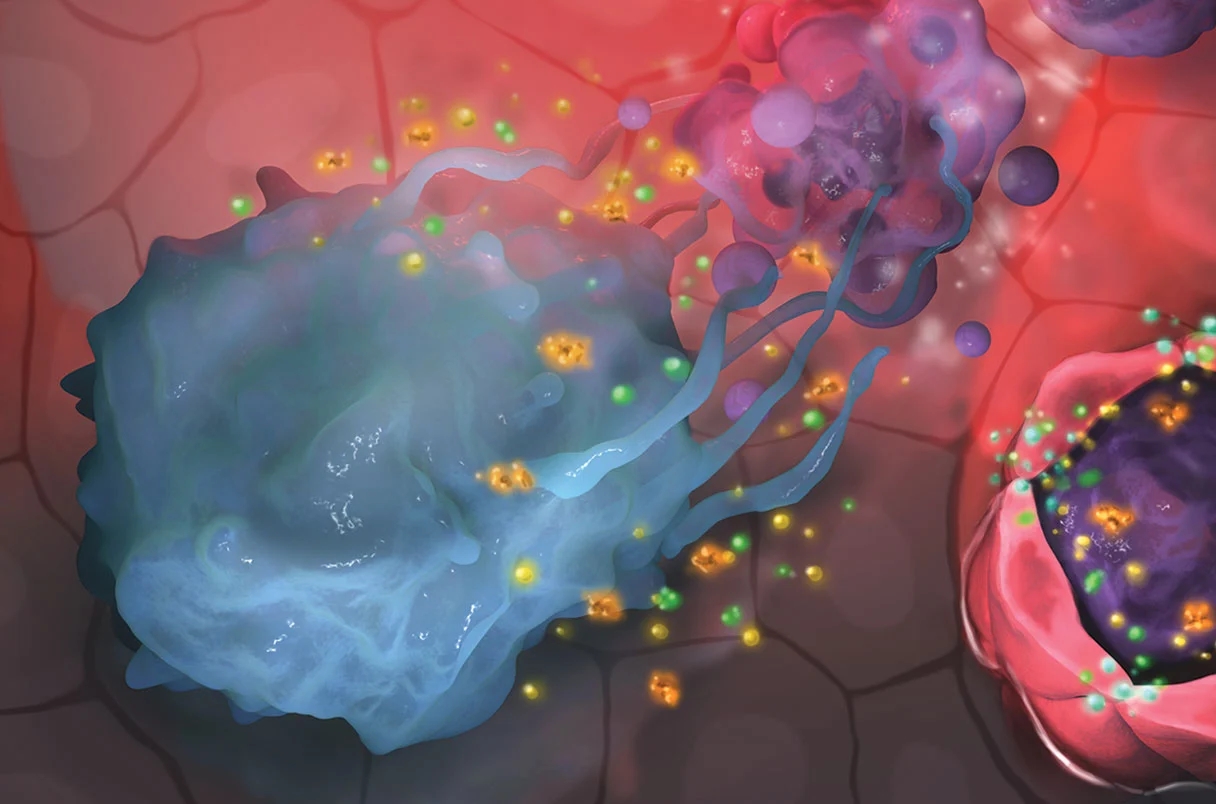
Doubts about work claiming that certain molecules actively quell inflammation in the body have intensified. Critics have doubled down on their objections with a recent paper, and Science has learned that although a university publicly exonerated one of the researchers involved of misconduct, it appears to have at one point reached a different conclusion.
The furor surrounds pioneering work on lipids known as specialized proresolving mediators (SPMs), done by Brigham and Women’s Hospital biochemist Charles Serhan and his former postdoc Jesmond Dalli, a molecular pharmacologist now at Queen Mary University of London (QMUL). More than a dozen scientists who have analyzed SPM research by Dalli, Serhan, and others formally published a critique of the work in Nature Communications last week. The analysis, which appeared last year as a preprint, attacks the method used to detect SPMs in many papers for producing misleading results. The journal also posted a rebuttal by Dalli and a colleague, attacking the critique for several reasons, including a “misrepresentation” of his group’s criteria for detecting SPMs.
The critics’ concerns had sparked misconduct investigations by QMUL and Harvard Medical School (HMS), of which Serhan’s hospital is an academic affiliate. This summer, in response to an inquiry from Science, QMUL said it had cleared Dalli of wrongdoing. “There were absolutely no findings of data falsification or fabrication of data,” a QMUL spokesperson wrote in an email. And the university subsequently posted a statement online saying HMS had found no misconduct by Serhan. (HMS says it “does not comment on individual circumstances and specific cases.”)
Research on SPMs has burgeoned in recent years, driven in part by the possibility that they could lead to drugs able to shut down damaging inflammation. But last year, Science reported on the increasing skepticism that SPMs resolve inflammation in the body. In the peer-reviewed analysis published last week, a group of 15 researchers said the mass spectrometry method used to detect SPMs in one of Dalli’s papers “artifactually [detects] lipids where none exist.” The researchers have identified at least 80 papers that used this method. When the critique appeared as a preprint in December 2021, Dalli defended his methodology, as did Serhan, who identified some of the first SPMs in 1984.
Many of the questions about Serhan and Dalli’s papers concerned what the two researchers have called “illustrations” but other scientists have interpreted as real data displays. In a comment on PubPeer, Dalli wrote: “Their scope is simply to illustrate the presence of molecules of interest in as much as an illustration of a mouse in a figure is not reporting the mouse that was used in an experiment but rather denoting that mice were used.” QMUL’s investigation into Dalli took note of the illustrations, the school spokesperson emailed Science, but they called any assumption that they were actual data a “misinterpretation” that “has been dealt with in correspondence with journals and senior authors.”
Experts in mass spectrometry of lipids, however, disagree with Dalli’s explanation. “Illustrations were claimed to be real data in a large number of publications, and this is absolutely not common practice,” says lipid biochemist Valerie O’Donnell at Cardiff University, an author of the Nature Communications critique. “Moreover, the same artwork posed as different samples across 13 different papers.”
Neither Serhan nor Dalli has shared raw data that might help resolve the doubts, says Garret FitzGerald of the University of Pennsylvania, who is also an author of the critique, even though they stated on PubPeer that they would. During peer review of the Nature Communications paper the journal requested raw data. QMUL and Dalli refused, citing reasons that included patient confidentiality and intellectual property, he says. “We tried to support Dalli and his institution to provide anonymized raw data, but for unknown reasons this was somehow impossible.”
One former Dalli co-author who has gained access to raw data contends they are flawed. Derek Gilroy, an immunology researcher at University College London who is not an author on the Nature Communications paper, had independent lipid experts reanalyze data Dalli provided for a 2017 study on which Gilroy collaborated. They found no SPMs in the samples, contrary to the paper’s initial findings. Gilroy has written a correction, which is available as a preprint, and has submitted it to the journal. “It’s upsetting to be made to believe in a story that the wider scientific community simply doesn’t agree with,” he says.
Dalli has posted an online rebuttal to Gilroy’s challenge—Gilroy calls it “factually incorrect”—but neither he nor Serhan responded to Science’s requests for comment.